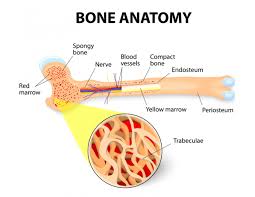
Recently Diagnosed or Relapsed? Stop Looking For a Miracle Cure, and Use Evidence-Based Therapies To Enhance Your Treatment and Prolong Your Remission
Multiple Myeloma an incurable disease, but I have spent the last 25 years in remission using a blend of conventional oncology and evidence-based nutrition, supplementation, and lifestyle therapies from peer-reviewed studies that your oncologist probably hasn't told you about.
Click the orange button to the right to learn more about what you can start doing today.
- You are here:
- Home »
- Blog »
- non-conventional therapies »
- Multiple Myeloma Bone Therapy- Cissus Quadrangularis
Multiple Myeloma Bone Therapy- Cissus Quadrangularis

“We conclude that cissus quadrangularis (CQ) can reduce OVX induced bone loss and it does this in the long bones in a site-specific manner with more effects on the cancellous bone of femur followed by tibia.”
I think the name cissus quadrangularis sounds like some sort of ancient mythical god. Or maybe some sort of sea monster. Anything but a multiple myeloma bone therapy.
As a long-term survivor of multiple myeloma (MM), I have come to see my disease as both a blood cancer as well as a bone disease. Bone damage is both a MM symptom and a MM side effect.
Many newly diagnosed multiple myeloma patients present with either osteopenia, osteoporosis or outright bone damage.
90% of MM patients will experience bone lesions or pathological bone damage at some point during their lives.
Most importantly for the person living with MM, bone health is an ongoing challenge. MM survivors struggle with the bone eating action of MM itself as well as enduring the bone thinning therapies of dexamethasone as well as chemotherapy.
The old saying that “the cure is worse than the disease” is spot-on when talking about multiple myeloma.
You read that correctly. Many of the therapies prescribed to multiple myeloma patients actually cause bone damage.
Therefore, MM bone therapies are essential. MM survivors must actively build their bone strength daily. As the articles linked and excerpted below explain, nutritional supplementation can be a vital source of bone health.
I’ve researched and written about numerous evidence-based but non-conventional bone health therapies such as
- Vitamin D3
- CBD oil
- Weight bearing exercise
- Curcumin
- Resveratrol
as well as many more.
According to the studies below, I can now add Cissus quadrangularis, or simply “Cissus” to the list of nutritional supplements shown to enhance bone health.
- To learn more about managing your bone health, click now
- To Learn More about bone therapy- click now
David Emerson
- MM Survivor
- MM Cancer Coach
- Director PeopleBeatingCancer
Recommended Reading:
- Multiple Myeloma- Enhance Bone Health w/ Probiotics-
- Multiple Myeloma Therapy – Eight Slices of the Magic Bullet
- A Long-term Multiple Myeloma Survivor’s Diet, Nutrition Plan-
Efficacy and Safety of Cissus quadrangularis L. in Clinical Use: A Systematic Review and Meta-analysis of Randomized Controlled Trials.
“This study aimed to determine the efficacy and safety of Cissus in all conditions. Publications from 12 electronic databases were searched from inception through November 2016. A total of nine studies with 1108 patients were included.
Each outcome was pooled using a random effects model. Effects of Cissus on hemorrhoid symptoms were not different from any comparators but had significant effects on bone pain.
Effects of Cissus combination products on:
- body weight reduction,
- low-density lipoprotein,
- triglyceride,
- total cholesterol,
- and fasting blood sugar
were superior to placebo, with weighted mean difference of -5.19 kg (-8.82, -1.55), -14.43 mg/dl (-20.06, -8.80), -37.50 mg/dl (-48.71, -26.29), -50.50 mg/dl (-70.97, -30.04), and -10.39 mg/dl (-14.60, -6.18), respectively.
No serious adverse effects were reported. Quality of evidence based on Grades of Recommendations Assessment Development and Evaluation (GRADE) indicated low (bone fractures) to high quality (hemorrhoids, body weight reduction).
In conclusion, Cissus had benefit for bone fractures, but not for hemorrhoids. For obesity/overweight, only combination products are pooled and show benefit. However, high-quality studies remain needed.
Inhibition of Bone Loss by Cissus quadrangularis in Mice: A Preliminary Report
“Osteoporosis is a disease associated with aging that causes fragility of bones making them susceptible to fractures with minor trauma.
Bone is a dynamic organ that undergoes lifelong changes by bone remodeling using specialized cells and is the predominant process after attaining peak bone mass around the third decade. Remodeling is an essential process for maintaining the skeleton by repairing any damaged portions and removal of old bone as well as for discharging calcium and phosphorus from bone stores to maintain ionic homeostasis in the body. An imbalance in the process of bone remodeling where there is increased bone resorption alone or in combination with decreased bone formation results in net loss of bone…
Conclusions- We conclude that CQ can reduce OVX induced bone loss and it does this in the long bones in a site-specific manner with more effects on the cancellous bone of femur followed by tibia. CQ probably reduces bone resorption primarily by downregulating proinflammatory cytokines that are often increased after ovariectomy. The beneficial effects of CQ are probably due to the flavanoids present.
Although the mechanism(s) by which CQ attenuates ovariectomy-induced bone loss has to be studied, CQ being an edible plant and with a history of medicinal effects, especially in healing bone fractures, may be a good supplement to existing medication for the reversal of postmenopausal bone loss…”
Vitamins and bone health: beyond calcium and vitamin D.
“Osteoporosis is a major health disorder associated with an increased risk of fracture. Nutrition is among the modifiable factors that influence the risk of osteoporosis and fracture. Calcium and vitamin D play important roles in improving bone mineral density and reducing the risk of fracture.
Other vitamins appear to play a role in bone health as well. In this review, the findings of studies that related the intake and/or the status of vitamins other than vitamin D to bone health in animals and humans are summarized.
Studies of vitamin A showed inconsistent results. Excessive, as well as insufficient, levels of retinol intake may be associated with compromised bone health.
Deficiencies in vitamin B, along with the consequent elevated homocysteine level, are associated with bone loss, decreased bone strength, and increased risk of fracture.
Deficiencies in vitamins C, E, and K are also associated with compromised bone health; this effect may be modified by smoking, estrogen use or hormonal therapy after menopause, calcium intake, and vitamin D.
These findings highlight the importance of adequate nutrition in preserving bone mass and reducing the risk of osteoporosis and fractures.”


